What Is The Best Lens For Landscape Photography?

Landscape photography can be one of the most demanding genres of photography around when it comes to lenses! One minute you could be using a 12mm ultra-wide-angle lens to photograph a dynamic, sweeping scene that spans your entire field of vision, and the next minute you could be reaching for your 100-400mm lens to capture an intimate telephoto landscape detail photo!
So, the question, “what is the best lens for landscape photography?” deserves a whole lot of consideration, and we won’t have time for all of it in just this one article.
For now, we’ll narrow the discussion to the best WIDE-ANGLE lens for landscape photography! We will briefly talk about what makes a lens good for landscapes, and therefore, what to look for in both standard and telephoto focal lengths as well.
Whatever camera system you’re using, whether mirrorless or DSLR, whether you’re looking for name-brand flagship lenses or affordable third-party lenses, there is at least one lens out there that is a perfect choice for what you do.
What Aperture Do You Need?
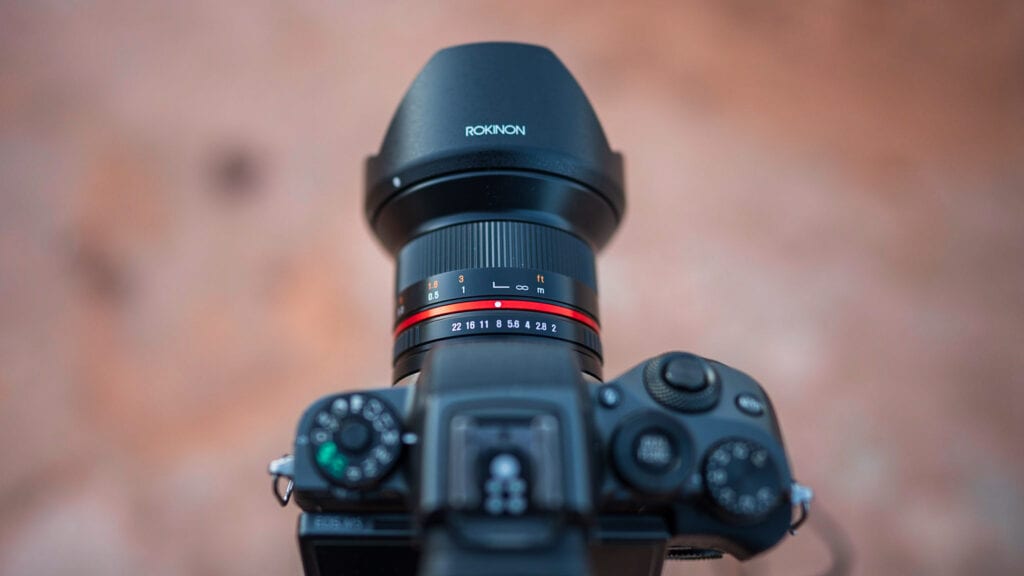
Before we get to the most important part, (I’m talking about focal lengths, of course!) …there is something else that we should keep in mind as we start choosing the right lens for landscape photography.
For a lot of landscape photographers, the most-used apertures are going to be in the range of f/8, f/11, etc. Therefore, I have some good news: you don’t necessarily need to worry about buying an “exotic” pro lens, such as a fast prime or an f/2.8 zoom!
All you really need is, to get the sharpest possible images when your aperture is stopped down, and these days a portable f/4 zoom or an f/2.8 prime might be all you need! In fact, even the f/3.5-5.6 or similar “kit” zooms are often incredibly sharp, if you’re hitting f/11 for all your photos.
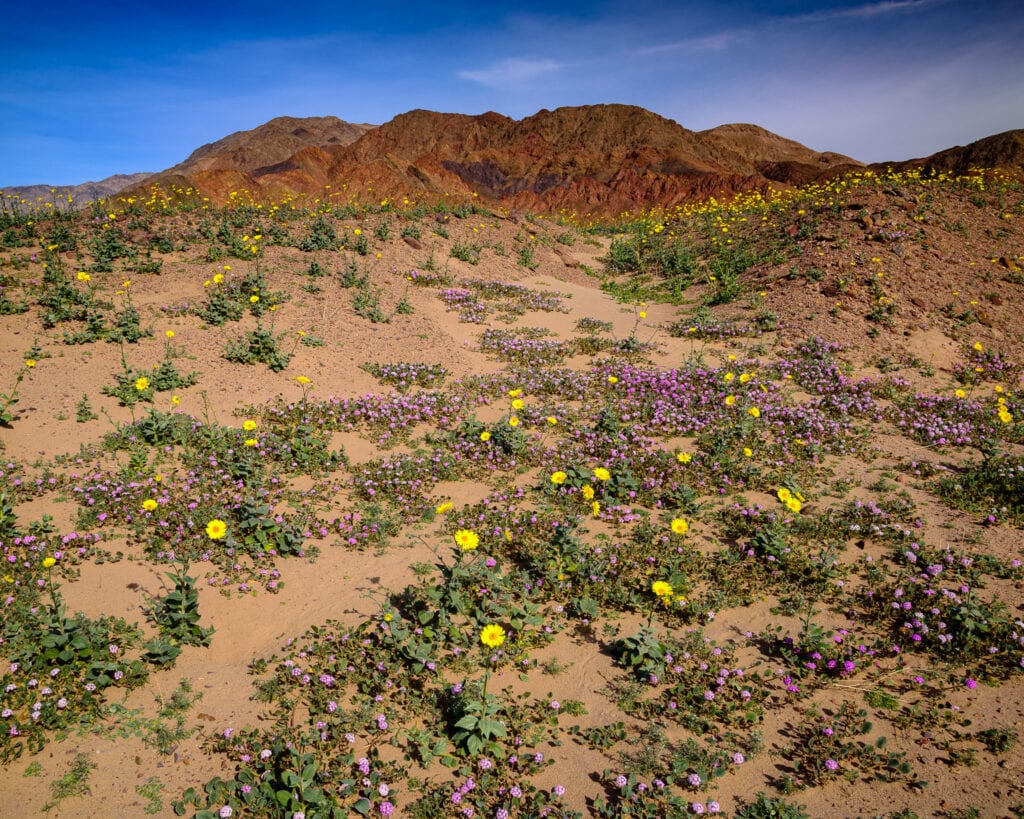
I mention lens aperture because, unfortunately, just 10-20 years ago things were different. Even if you just wanted your lens to be sharp at f/8 or f/11, you still had to avoid slower, less professional lenses, because only the top-shelf professional glass was truly any good, period.
Today, thanks to advanced computer-aided optical design, as long as you don’t zoom in on the extreme corners of your images, most all of your lenses will deliver incredibly sharp results.
Of course, if you also photograph nightscapes, things are different; you may want to consider making one of your wide-angle lenses a very “fast” (aperture) one. If you barely do a tiny bit of astro-landscape photography, this might just mean adding a compact, affordable 20mm f/1.8 or 24mm f/1.8 prime to your bag. Or, if you do just as much astro-landscape work, or even MORE, then there’s a good chance you will want at least one f/2.8 zoom, and maybe an f/1.4 prime.
What Focal Length Is Best For Landscape Photography?

When it comes to traditional landscape photography, a whole lot can be accomplished with just a few focal lengths, and a simple wide-angle lens. A 20mm or 24mm prime lens could bring you a lifetime of great images! In fact, among the “oldschool” legends in classic landscape imagery, many of your favorite images were probably made at the equivalent of 24mm or even “just” 28mm! Just keep this in mind as we start talking about the truly “exotic” focal lengths available.
Indeed, when it comes to the latest, dramatic, dynamic styles of shooting, it can be very tempting to get a zoom lens that goes all the way to 16mm, 15mm, 14mm, …or even 12mm or 11mm! (And, no, we’re not even talking about fisheye lenses!)
Do you absolutely need such an ultra-wide zoom? To answer that question, you must identify your personal creative style as a photographer, before you go and spend $2,000 or even $3,000 on a lens that you might wind up barely using!
So, before you make any big decisions, you have some homework: Grab whatever lens you already have, and go out to take lots of pictures! You might even want to rent an ultra-wide zoom or two, just to see what focal lengths you find to be the most useful, and equally importantly, if you’re okay with lugging around a giant, heavy lens!
If you do this, you’ll be one very big step closer to knowing whether you can “get away with” a more modest 16-35mm f/4 wide-angle zoom, or if you need that truly exotic 12-24mm or 14-24mm f/2.8 lens instead. You could save yourself hundreds or thousands of dollars, and a lot of back/shoulder/neck pain!
Landscape Photography Lenses: Primes VS Zooms
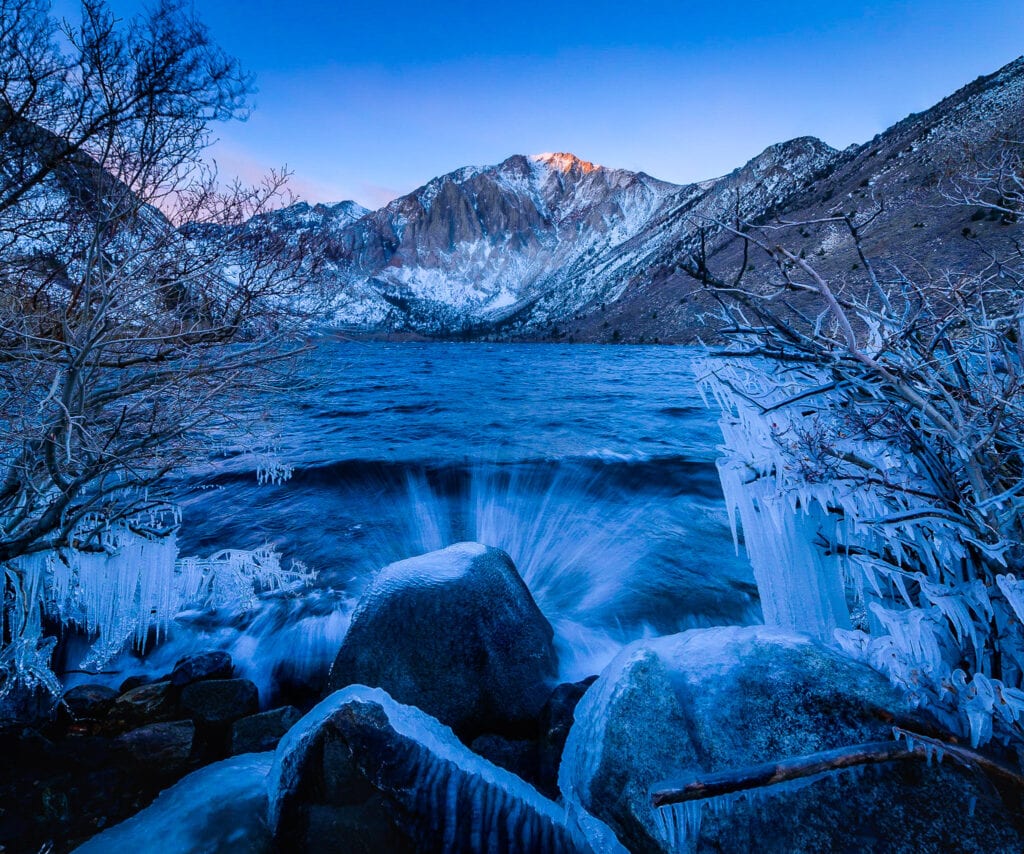
Since landscape photographers are some of the most sharpness-obsessed out there, the debate of primes versus zooms in landscape photography is one of the hottest topics around. Or at least, it used to be.
Modern computer-aided lens designs are simply incredible. Zooms are now, in fact, just as sharp as primes, and in some cases, they’re even sharper! This is very good news, because you could save quite a lot of money, as well as quite a bit of weight in your camera bag, if you can buy just one zoom to cover the range of 3-4 different prime lenses.
Having said that, there is still something to be said for the creative simplicity that a prime gives you as an artist. Not being able to zoom in or out often forces you to think much more carefully about your exact camera angle, and the precise framing around the edges of your composition. Thus, choosing to use just one or two prime lenses could possibly result in more well-thought-out images.
What do I shoot with? Personally, after 15+ years and countless wilderness adventures, I usually prefer a good zoom lens or two. I’ll go with an f/4 or variable aperture zoom if I’m not doing any nightscape photography, or if I am, I’ll trade my slower wide-angle zoom for an f/2.8 14-24mm.
Best Landscape Photography Lenses: Do You Need The Most Exotic Lens?
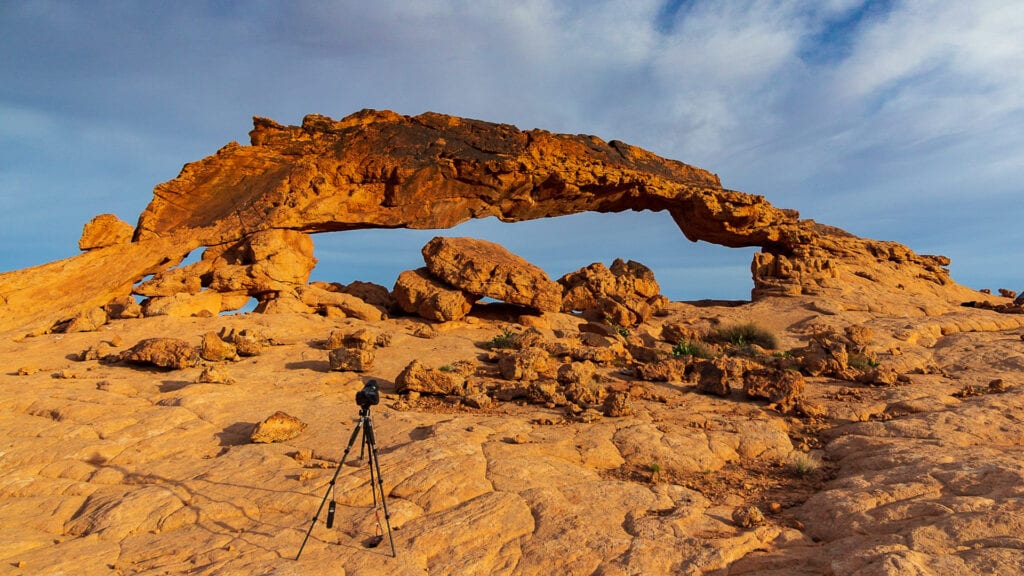
Here’s the last question that we should ask ourselves before we dive into the actual “best-of” lists: How obsessed with image quality are you? Do you need to spend a fortune on the most exotic lens on the market, or is it more practical for you to choose something a little less exotic?
To be totally honest, almost all of the lenses available are going to deliver impressive results if you’re not “pixel-peeping” too obsessively. In fact, if your favorite aperture is f/8 or f/11, unless you are zooming in to the extreme corners of your images, you’ll barely see any difference between a lens costing around $1000 or less, and one costing $2,000-$3,000.
Also, as one last bit of practical advice, don’t let yourself be tricked into thinking that a big exotic lens is necessary in order for you to be taken seriously by any fellow photographers, let alone to “get the shot”! Chances are, you’ll be much happier in the long run if your camera bag isn’t too weighed down with a bunch of giant, heavy lenses. Enjoying the adventure is just as important as getting the shot!
Best Lens For Landscape Photography
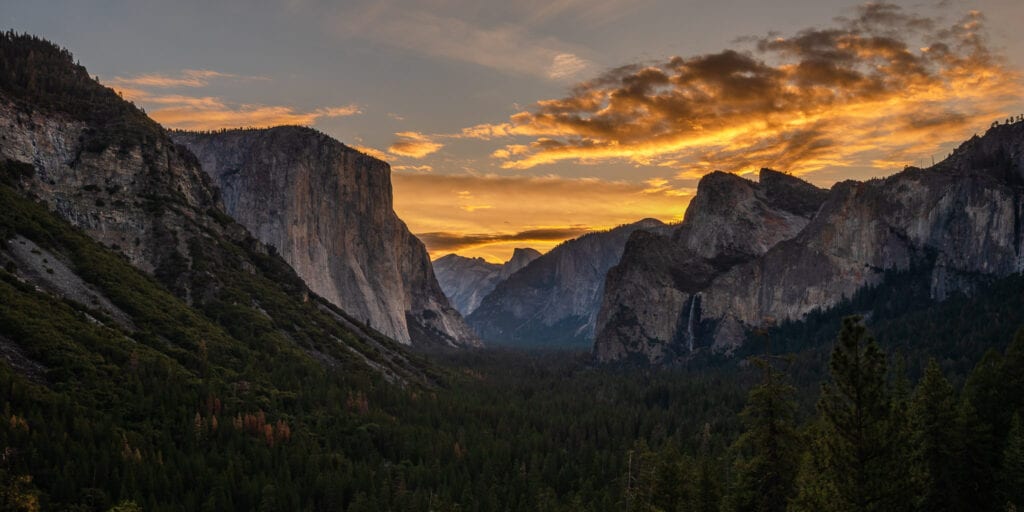
Alright, let’s talk about which lenses are truly the best of the bunch. There are a lot of different categories of lenses, though, so we’ll break them down by brand, and also by sensor size.
Are you curious about which lens or lenses is/are the absolute best? That’s why you’re reading this article, right? Well, we have a handful of “champions” to tell you about, if you count all the lens mounts and all the brands on the market today.

The absolute most impressive wide-angle lenses on the market today are all of the latest-generation f/2.8 ultra-wide zooms for full-frame mirrorless cameras. Canon, Nikon, Sony, all of their most recently announced high-end f/2.8 wide-angle zooms in the 14-24mm or similar range are virtually flawless. Incredible sharpness, minimal distortion, minimal vignetting & aberrations, and virtually no other issues like color fringing or astigmatism, etc.
Of course, none of these lenses are cheap. The most affordable, the Canon RF 15-35mm f/2.8 L IS, is almost $2,300, but it’s well-worth the price tag as it is the only lens in its class with optical stabilization and the ability to accept 82mm filters. The Nikkor Z 14-24mm f/2.8 S costs just a little bit more, at around $2,400, however it offers 14mm and f/2.8 in a relatively lightweight, portable package compared to the f/2.8 zooms of the DSLR realm. Last but not least, Sony’s latest exotic GMaster lens, the Sony FE 12-24mm f/2.8 GM, is a whopping $3,000, however, yes you read that correctly–it goes to 12mm and f/2.8, and yes, it is extremely sharp even at that aperture and focal length!
If you’re on a budget, however, there’s very good news, if you’re a Sony (or Leica L-mount) shooter, that is: Sigma’s 14-24mm f/2.8 DG DN Art is just as good as those name-brand lenses, and will only cost you $1,100!
Aside from these best-of-the-best landscape photography lens champions, there are innumerable other lenses that you can consider, thankfully many of which are affordable, portable, or both! So, let’s break them down, brand by brand.
Best Canon Lens For Landscape Photography
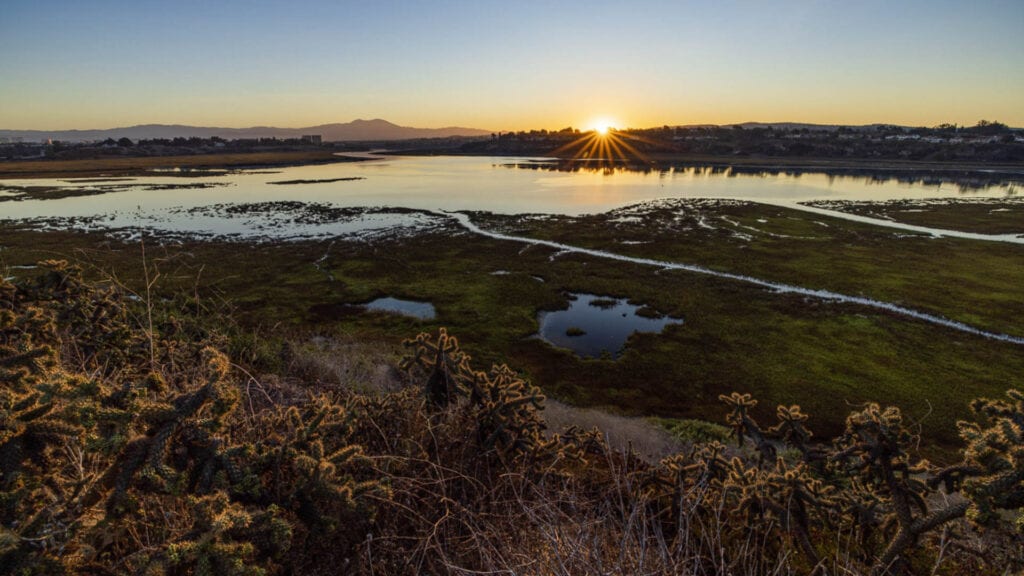
A decade ago, Canon was not exactly the best at making wide-angle or ultra-wide-angle lenses, that’s for sure. Even their older “L” class lenses were just not very impressive, especially if you shot at faster apertures and/or pixel-peeped the corners of your images.
That all changed when Canon created the (DSLR EF-mount) 11-24mm f/4 L, a legendary ultra-wide lens. It is truly enormous, and not everyone’s style, but if you do want to go to 11mm and have about $3,000 to spend, it’s worth it.
In the full-frame mirrorless realm, the Canon RF 15-35mm f/2.8 L IS is an incredibly attractive lens, with amazing image quality, plus it goes to 15mm and f/2.8, yet still accepts standard 82mm threaded filters, so you won’t need to carry around one of those massive, cumbersome, clamp-on filter systems!
Canon is known for their L-series lenses in general, and unfortunately this means that if you’re on a budget, whether DSLR or mirrorless, the best affordable Canon landscape photography lenses are third-party lenses. Thankfully, there are innumerable EF-mount wide-angle zooms from the likes of Tamron and Sigma, and for the new mirrorless Canon RF mount, smaller lens companies like Laowa/Venus and Rokinon/Samyang are already stepping up to the plate with some good ultra-wide primes!
Best Nikon Lens For Landscape Photography
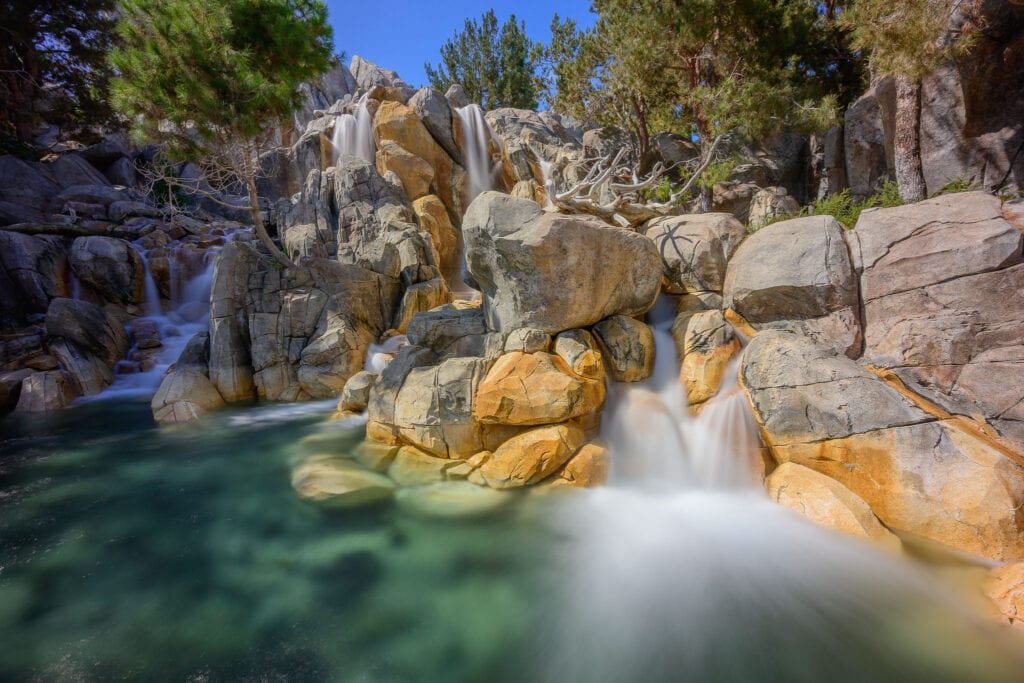
The Nikkor Z 14-24mm f/2.8 S also qualifies as “nearly flawless” in its image quality. Also, as an added bonus, the optical design is such that the front element is not “bulbous” and large at all; in fact, with the included add-on hood, you can even fit 112mm threaded filters, though we don’t know of a square filter size that can fit that without going all the way to the ultra-large 150mm landscape photography filter systems.
One great thing about Nikon, however, is that they don’t just put all their efforts into top-shelf lenses; they make some of the best mid-priced and (relatively) affordable lenses around, too! The Nikkor Z 14-30mm f/4, quite honestly, is an even more exciting lens for landscape photographers! It is truly ultralight, (it’s not much bigger than a cheap kit lens!) and yet it still delivers solid image quality, especially when stopped down to f/11 or so.
Alternately, Nikon’s 20mm f/1.8 Z/S is a truly incredible lens for those who are okay with a wide-angle prime lens. Last but not least, in the DSLR realm, Nikon’s F-mount is the one that started the ultra-wide, ultra-sharp zoom lens phenomenon, with the Nikkor 14-24mm f/2.8 G N, still a legendary lens despite being nearly 14 years old! (Don’t hesitate to buy the Tamron 15-30mm f/2.8 VC as an even better alternative, though!)
Best Sony Lens For Landscape Photography
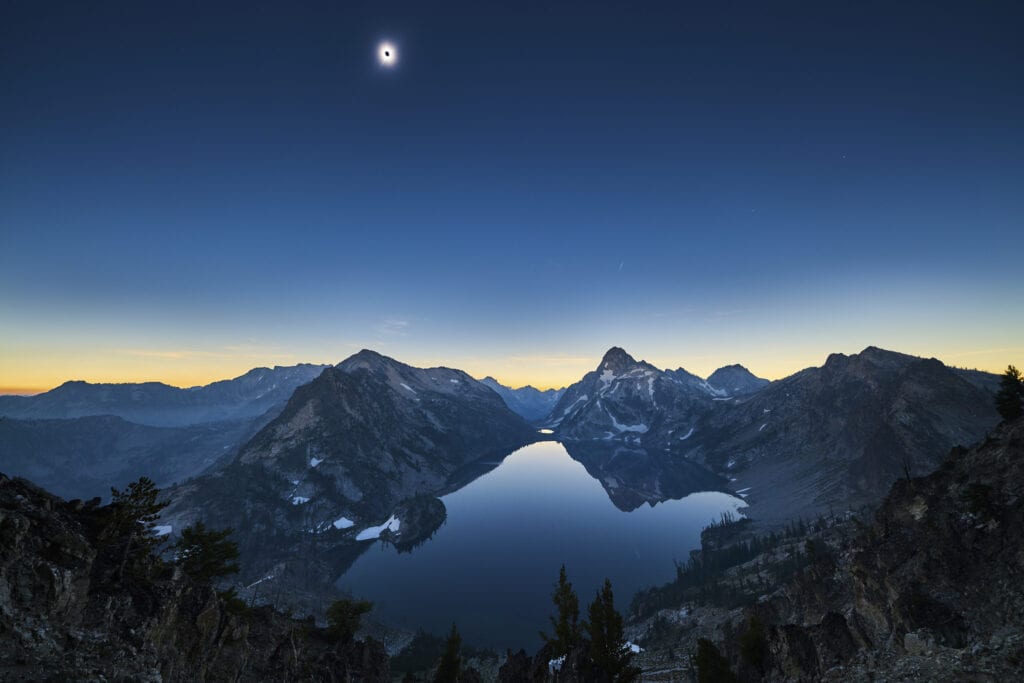
On Sony, the Sigma 14-24mm f/2.8 DG DN Art, ($1,200, only available for Sony mirrorless) and the Sony FE 12-24mm f/2.8 GM ($3,000) are truly incredible and offer virtually flawless image quality for both a modest and exotic budgets.
Unfortunately, we can’t compliment the next-best thing as highly as the two top choices; the Sony 16-35mm f/2.8 GM is rather expensive considering it is slightly less excellent in terms of image quality.
Plus, Sony’s other 12-24mm lens, the f/4 G version, is another impressive performer, but for the price tag, it is definitely not approaching perfect, and quite honestly, the Sigma 14-24mm f/2.8 DG DN is cheaper and much sharper!
Having said that, again, you will really have to split hairs to see a real-world difference between any of these amazing lenses.
Best Sigma Lens For Landscape Photography
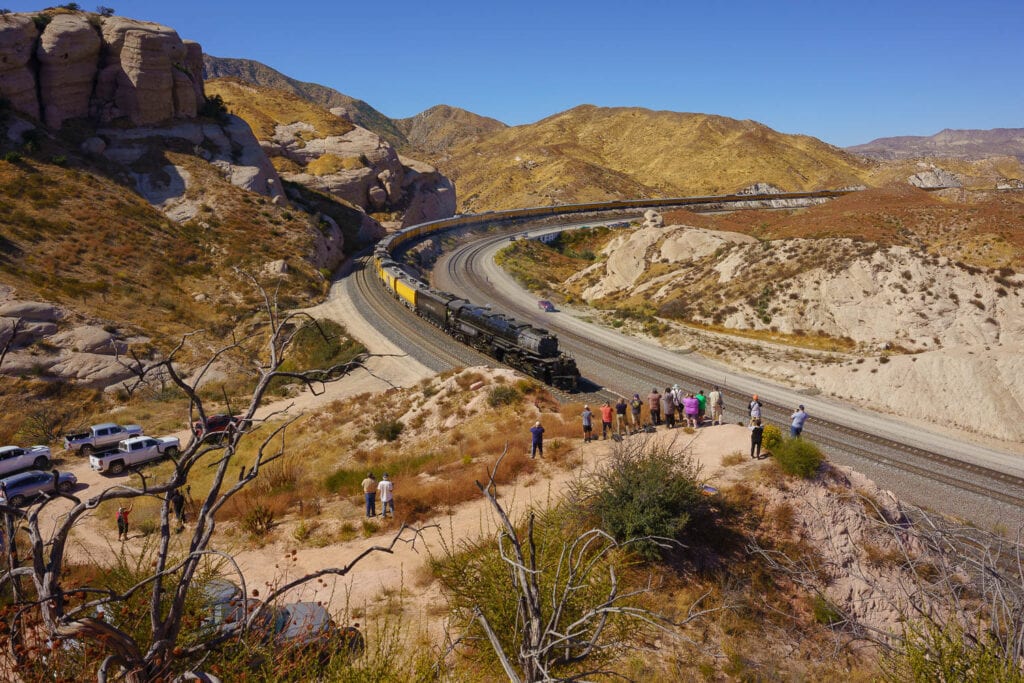
Since Sigma mainly makes lenses for existing Canon/Nikon/Sony etc, for both full-frame mirrorless and full-frame DSLRs, this section won’t get very in-depth.
I will say, however, that virtually every “Art” series wide-angle lens that Sigma made in the last 5-10 years has been incredible, and most are well-suited to landscape photography, and even astro-landscape photography at faster apertures. Their f/1.4 prime lenses aren’t perfect, however, their f/2.8 zooms and f/4 zooms are incredible. If you’re on a DSLR mount, or adapting one to mirrorless, then a Sigma 14-24mm f/2.8 or 12-24mm f/4 make incredible choices. Watch out, though–they’re absolutely enormous and very front-heavy!
Best Tamron Lens For Landscape Photography
Tamron has been the lightweight, portability champion for many years, indeed a decade-plus probably, and their current lineup shows it: You really aren’t going to find a better choice when it comes to either mirrorless or DSLR lenses that save a ton of weight in your bag, and also save your wallet!
First and foremost, we love the full-frame mirrorless wide-angle Tamron 17-28mm f/2.8, which is truly tiny considering its impressive image quality. The 17-28mm is only available on Sony, though, for now.
If you’re using a DSLR, or adapting a lens to mirrorless, you have a few great options: Tamron’s 15-35mm f/2.8 VC G2 (and the original version) are truly incredible, though heavy, and Tamron’s 17-35mm f/2.8-4 makes a truly tiny, lightweight, portable adventure/travel alternative.
(NOTE: Apparently, Tamron partnered with PENTAX optical engineers to create the 15-30mm f/2.8 optical formula, so if you’re a Pentax shooter, get their 15-30mm f/2.8; it’s just as incredible!)
Landscape Photography Lenses | Tokina, Rokinon/Samyang, Laowa/VENUS, Irix
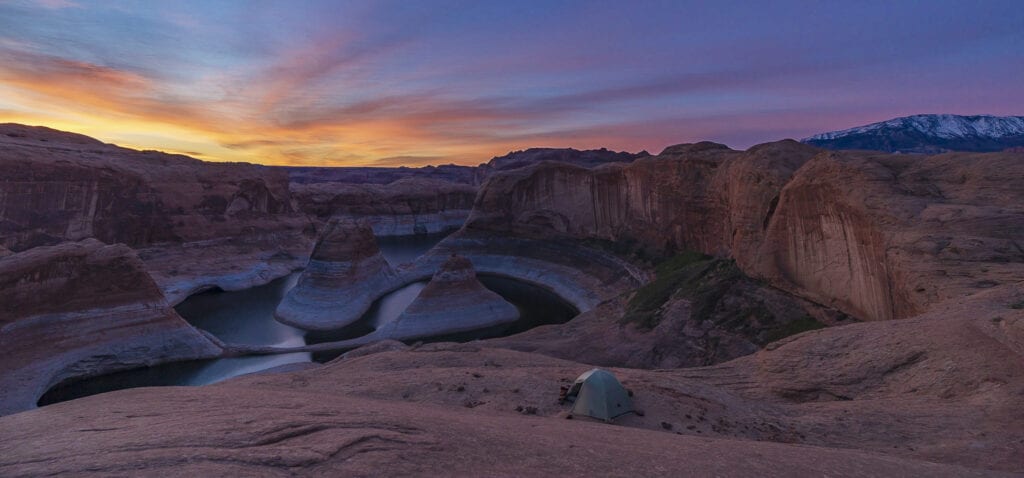
There are many third-party lens makers out there, and a lot of new ones have popped up in recent years with exotic sounding lens designs.
Are they any good? Yes, they’re all quite good, as long as you’re not too obsessed with the extreme corners of your images being perfectly tack sharp. (In which case you’ll want to stick with a Tamron or Sigma, in terms of third-parties, or of course stick to the name brands too!)
Tokina is a brand that has been around forever, and they always make truly incredible wide-angle lenses. Unfortunately they haven’t made a modern 14-24mm type lens yet, for mirrorless or for DSLR mounts. However, if you’re on an APS-C crop sensor, rejoice! Their 11-20mm f/2.8, 12-28mm f/4, and 14-20mm f/2 are all the hands-down winners of wide-angle landscape photography on APS-C sensor systems.
Laowa (VENUS) and Irix have created quite a few impressive wide-angle lenses, mostly primes. Laowa’s optics are especially impressive when it comes to having zero distortion; straight lines stay straight, even without an automatic lens profile being applied! That’s impressive, indeed.
Rokinon/Samyang has a long reputation for making extremely sharp lenses, however, they also don’t have the best reputation for durability under heavy abuse, so if you do get a Roki-Yang lens, (their various 14mm primes are all legendary, and fit literally ANY budget) …do take very good care of your delicate lens!
Crop Sensor Lenses For Landscape Photography

There are many different camera systems and mounts out there, of course, and we only scratched the surface by talking about a few of the full-frame wide-angle lenses for landscape photography.
Of course, it should almost go without saying, you can definitely find a perfect/best landscape photography lenses for your APS-C or Micro Four Thirds camera system! Look for 10-24mm or similar lenses on APS-C (1.5x crop) systems, and look for even wider focal lengths on the (2x crop) Micro Four Thirds systems.
As we suggested above, if you’re on APS-C, we could simply state that Tokina makes the absolute best lenses, period. Yes, they’re even better than most of the name-brand optics, even! (If you’re on Fuji or Olympus, though, the name-brand options are truly incredible, such as Fuji’s 10-24mm f/4 WR an the Olympus 8-16mm f/2.8; both are the wide-angle winners for their respective mounts.)
Conclusion | Best Lens For Landscape Photography

We barely scratched the surface of all the right lenses for landscape photography, and we will definitely have to create an entire article about the other focal lengths, or even other mounts and sensor sizes besides full-frame! and what types of landscape photos they are good for!
In fact, depending on the type of landscape photography you do, of course, you may want to start with a simple 24-105mm f/4 full-frame lens. You can go on a lot of landscape photography adventures with a simple mid-range zoom, however, once you start getting really serious about landscapes, you’ll probably want one of these wide-angle lenses which we highly recommended in this article.
Leave a comment below if you think we forgot one, or have any questions about a specific new lens that isn’t yet on this list!
